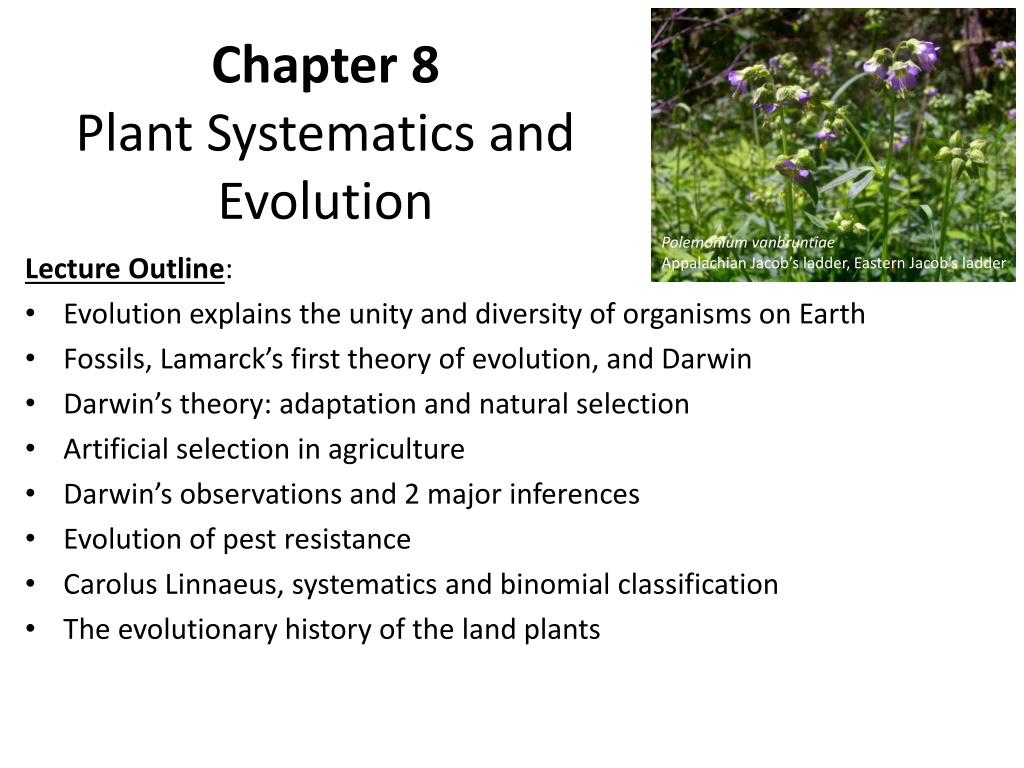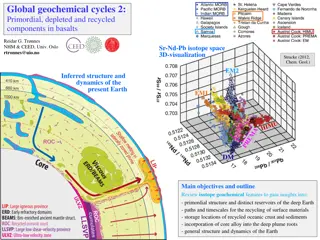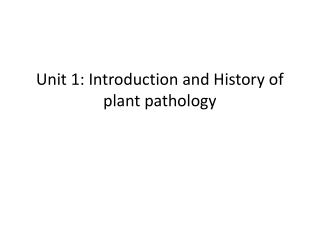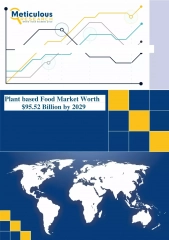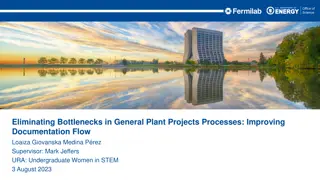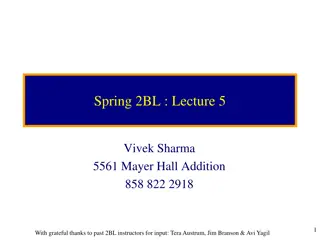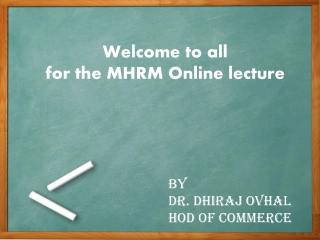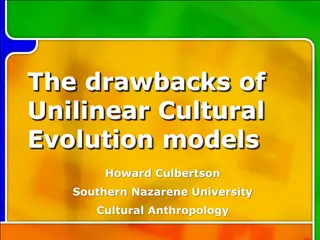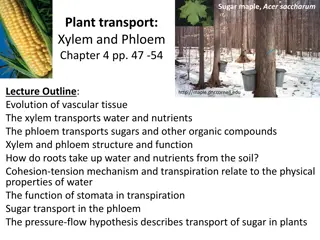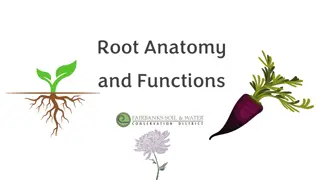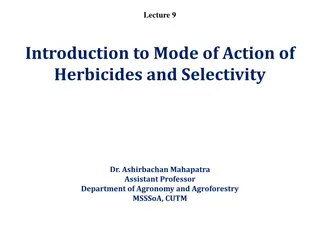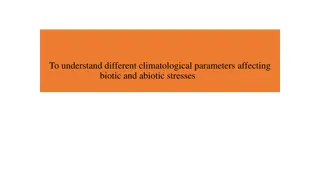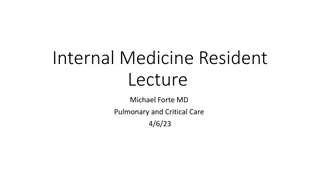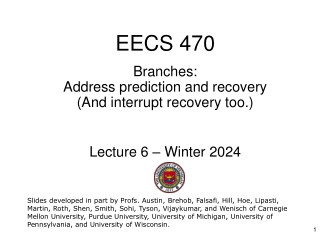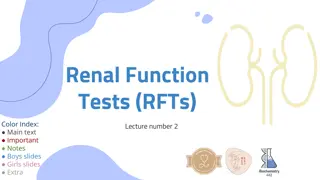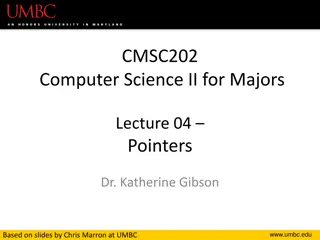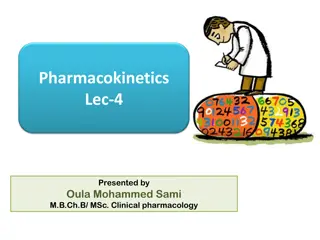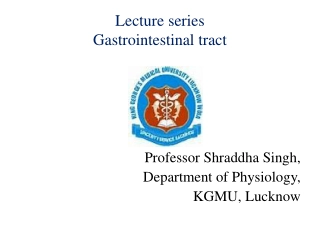Evolution and Plant Systematics Lecture Overview
This lecture outline delves into the concepts of evolution, unity, and diversity of organisms on Earth, covering topics such as fossils, Lamarck and Darwin's theories, adaptation, natural selection, artificial selection, Carolus Linnaeus' systematics, plant evolution, and the demonstration of evolutionary mechanisms by Charles Darwin. The visual aids and key observations presented help in understanding the evolutionary history of plants and life on Earth.
Evolution and Plant Systematics Lecture Overview
PowerPoint presentation about 'Evolution and Plant Systematics Lecture Overview'. This presentation describes the topic on This lecture outline delves into the concepts of evolution, unity, and diversity of organisms on Earth, covering topics such as fossils, Lamarck and Darwin's theories, adaptation, natural selection, artificial selection, Carolus Linnaeus' systematics, plant evolution, and the demonstration of evolutionary mechanisms by Charles Darwin. The visual aids and key observations presented help in understanding the evolutionary history of plants and life on Earth.. Download this presentation absolutely free.
Presentation Transcript
Chapter 8 Plant Systematics and Evolution Polemonium vanbruntiae Appalachian Jacob s ladder, Eastern Jacob s ladder Lecture Outline: Evolution explains the unity and diversity of organisms on Earth Fossils, Lamarck s first theory of evolution, and Darwin Darwin s theory: adaptation and natural selection Artificial selection in agriculture Darwin s observations and 2 major inferences Evolution of pest resistance Carolus Linnaeus, systematics and binomial classification The evolutionary history of the land plants
Evolution The overarching theme in botany and biology http://evolution.berkeley.edu
Key observations of life 1. Organisms are well suited for life in their environment. 2. Living organisms share many characteristics (example = DNA). This demonstrates the unity of life. 3. The Earth has a rich diversity of living organisms.
Fossilsare evidence for evolution www.mnh.si.edu Cooksonia pertoni, the oldest plant fossil (425 MYO) Archaefructus sinensis, the oldest angiosperm fossil
Lamarck (1744 - 1829) was one of the first to propose a mechanism for evolutionary change
Charles Darwin was the first to demonstrate a mechanism of evolution with evidence GREAT BRITAIN EUROPE NORTH AMERICA ATLANTIC OCEAN The Gal pagos Islands AFRICA Pinta Genovesa Equator Marchena SOUTH AMERICA Santiago Daphne Islands AUSTRALIA Pinz n Fernandina PACIFIC OCEAN Cape of Good Hope Santa Cruz Isabela Santa Fe San Cristobal Tasmania Florenza Espa ola Cape Horn New Zealand Tierra del Fuego
Charles Darwin was the first to demonstrate a mechanism of evolution with evidence GREAT BRITAIN EUROPE NORTH AMERICA ATLANTIC OCEAN The Gal pagos Islands AFRICA Pinta Genovesa Equator Marchena SOUTH AMERICA Santiago Daphne Islands AUSTRALIA Pinz n Fernandina PACIFIC OCEAN Cape of Good Hope Santa Cruz Isabela Santa Fe San Cristobal Tasmania Florenza Espa ola Cape Horn New Zealand Tierra del Fuego Darwin s important question: Could a new species arise by the gradual accumulation of adaptations to different environments?
Evolution by natural selection natural selection = A process in which organisms with certain inherited characteristics are more likely to survive and reproduce than are organisms with other characteristics. What counts in natural selection is not "survival of the fittest" but a question of reproduction the extent to which any particular type can outbreed its competitors.
Artificial selection of agricultural species Terminal bud Lateral buds Cabbage Brussels sprouts Flower clusters Leaves Kale Cauliflower Stem Wild mustard Flowers and stems Broccoli Kohlrabi
Natural selection Main ideas of Darwin s book, the Origin of Species: 1. descent with modification explains life s unity and diversity 2. natural selection brings about the match between organisms and their environment Charles Darwin
Darwins 1st observation: Members of a population often vary greatly in their traits Konza Prairie, KS
Darwins 2nd observation: Traits are inherited from parents to offspring Gregor Mendel s seminal breeding experiments with pea plants
Darwins 3rd observation: Species produce more offspring than the environment can support. Owing to lack of food or other resources, many of these offspring do not survive. Puffball fungus with spore cloud Dandelion (Taraxacum officinale) seed dispersal
Darwins 1st inference: Individuals whose inherited traits infer high survival and reproduction in a given environment tend to leave more offspring.
Darwins 1st inference: Individuals whose inherited traits infer high survival and reproduction in a given environment leave more offspring. Darwin s 2nd inference: This unequal ability of individuals to survive and reproduce will lead to the accumulation of favorable traits in the population over generations.
cotton armyworm Evidence for evolution: Insect resistance to Bt cotton Bruce E. Tabashnik, J.B.J. Van Rensburg,and Yves Carriere. Field-Evolved Insect Resistance to Bt Crops: Definition, Theory, and Data. J. Econ. Entomol., 102(6): 2011-2025 (2009)
Natural selection: important points 1. Natural selection is an editing mechanism, not a creative force. 2. Natural selection favors traits that increase fitness in the current, local environment.
Systematics = an approach to classifying the diversity and determining the evolutionary relationships of living and extinct organisms Evidence used to reconstruct evolutionary trees can be obtained from the fossil record , morphological, biochemical, and genetic similarities between organisms.
Carolus Linnaeus 1707-1778
Species: multiflora Hierarchical classification Genus: Rosa Family: Rosacaea Order: Rosales Class: Magnoliopsida Division: Magnilophyta Kingdom: Plantae Domain: Eukarya Archaea Bacteria
Scientific Names Species have binomial (two part) names Sugar Maple Common name Acer saccharum Scientific name Genus Specific epithet Binomial names should be underlined or italicized.
Names of higher taxa (genera and above) are uninomials e.g., Quercus - The genus of oaks Aceraceae - The family of maples The names of families and above are capitalized but not italicized.
The Categories of the Linnaean Hierarchy and their Standard Endings (example: Common wheat) Rank Division Class Order Family Genus Species Standard Ending - phyta - opsida - ales - aceae Example Magnoliophyta (Flowering plants) Liliopsida (Monocots) Poales (Grasses, bromeliads, sedges) Poaceae (Grasses) Triticum (Wheat) Triticum aestivum (Common wheat) aestivum developing in summer
Nonvascular plants/ bryophytes Flowering seed plants/ angiosperms Nonflowering seed plants/ gymnosperms Seedless vascular plants Evolutionary tree of the land plants
Evolutionary history of the land plants Origin of land plants (about 475 mya) 1 Origin of vascular plants (about 420 mya) 2 Origin of extant seed plants (about 305 mya) 3 Liverworts (bryophytes) plants Nonvascular Land plants Hornworts ANCES- TRAL GREEN ALGA 1 Mosses Lycophytes (club mosses, spike mosses, quillworts) Vascular plants plants vascular Seedless 2 Pterophytes (ferns, horsetails, whisk ferns) Seed plants Gymnosperms 3 Angiosperms 50 500 450 400 0 350 300 Millions of years ago (mya)
Lecture Review, Chapter 8 Define evolution and adaptation. Describe Lamarck s theory, and explain why it has been rejected. Describe Darwin s theory of natural selection and contrast it with artificial selection. List and explain Darwin s observations and two inferences. Define systematics. What evidence is used to construct an evolutionary tree? What is hierarchical classification? What is Carolus Linnaeus contribution to science? Provide examples of standard endings for plant Divisions, Classes, Orders, and Families. What are the major groups of land plants? From what common ancestor did all land plants evolve?
